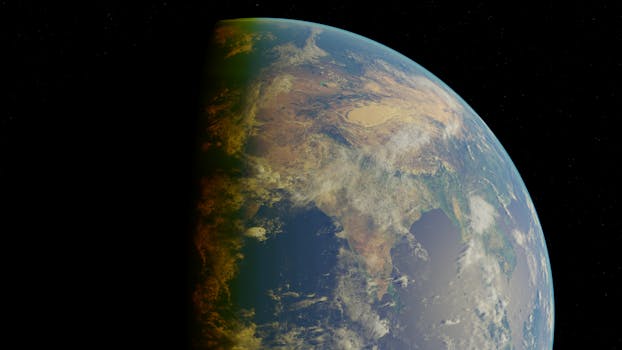Orbiting Innovations: Exploring the Latest in Earth-Observing Technology
Earth-observing technology has come a long way since the launch of the first Earth-observing satellite, TIROS-1, in 1960. Today, Earth-observing technology is a vital tool for understanding our planet and its many complex systems. From monitoring climate change to tracking natural disasters, Earth-observing technology plays a crucial role in helping us better understand and manage our planet’s resources.
The latest advancements in Earth-observing technology are being driven by innovations in satellite systems, data analysis tools, and sensor technologies. New satellite constellations, such as the European Space Agency’s Copernicus program and the US National Oceanic and Atmospheric Administration’s (NOAA) Geostationary Operational Environmental Satellite (GOES) series, are providing unprecedented levels of detail and accuracy in Earth observation data.
Advancements in Satellite Technology

One of the key drivers of innovation in Earth-observing technology is the development of new satellite systems. Next-generation satellites, such as the NASA’s Landsat 9 and the ESA’s Sentinal-2, are equipped with advanced sensors and instruments that can collect a wide range of data on the Earth’s surface and atmosphere. These satellites are capable of providing high-resolution images of the Earth’s surface, as well as data on temperature, humidity, and other environmental factors.
In addition to these new satellite systems, there are also many innovative technologies being developed to support Earth-observing technology. For example, advances in machine learning and artificial intelligence are being used to improve the analysis and interpretation of Earth observation data. These technologies are enabling scientists to extract more insights and value from the vast amounts of data being collected by satellites and other Earth-observing systems.
Applications of Earth-Observing Technology

The applications of Earth-observing technology are diverse and widespread. From monitoring climate change to tracking natural disasters, Earth-observing technology is being used to address some of the most pressing challenges facing our planet. For example, satellite data is being used to track deforestation and habitat destruction, as well as to monitor ocean health and marine ecosystems.
Earth-observing technology is also being used to support sustainable development and resource management. For example, satellite data is being used to identify areas of high conservation value, as well as to monitor the impacts of human activities such as mining and agriculture. By providing accurate and timely data on the Earth’s systems and processes, Earth-observing technology is helping to inform decision-making and support more sustainable development practices.
Conclusion

In conclusion, Earth-observing technology is a rapidly evolving field that is playing an increasingly important role in our understanding of the Earth and its systems. From advances in satellite systems to innovations in data analysis tools, the latest developments in Earth-observing technology are transforming our ability to monitor and manage the planet’s resources. As we look to the future, it is clear that Earth-observing technology will continue to play a vital role in addressing the many challenges facing our planet, from climate change to sustainable development.
See more:
